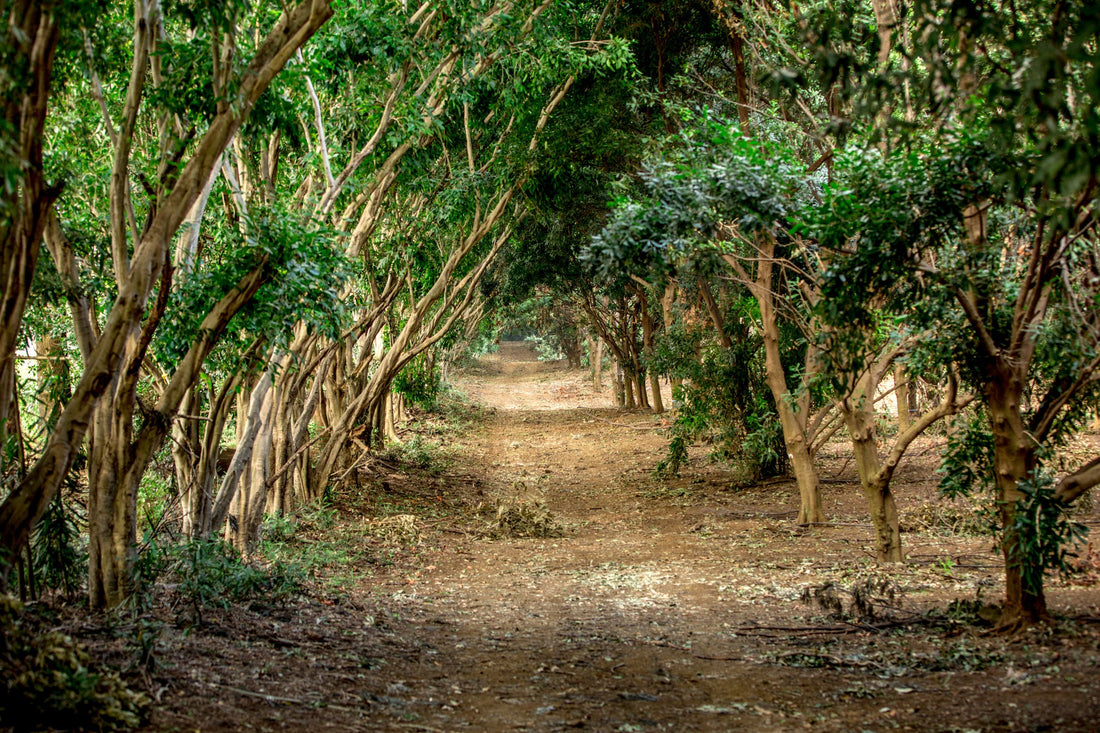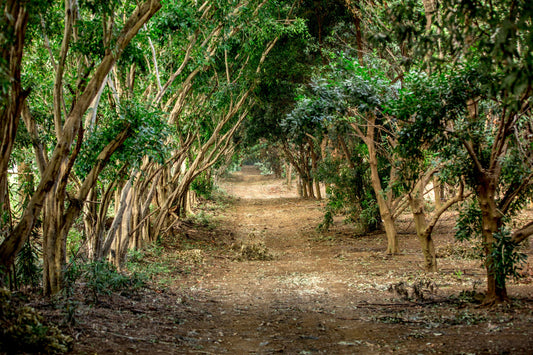The macadamia nut tree is a key cash crop for many Pacific Island nations, as well as a popular item in the United States and other Western countries. But how long does it take to grow a macadamia tree? There are many important considerations to address, including climate, flavour preferences, spacing, and harvest requirements. This article will provide an understanding of the processes and timeline associated with growing a mature macadamia tree to bear a good crop of nuts.

Macadamia trees are considered a slow-growing crop, taking anywhere from 2 to 10 years to reach maturity. But the true timeline for a macadamia tree can vary greatly depending on the variety or rootstock that is used, and the climate and soil conditions the tree is planted in. To ensure a successful crop, one must plan for the long-term and understand the needs of the tree, especially due to its lengthy maturation process. With that in mind, let's discuss the factors that play into the growth of a macadamia tree, and the average timeline it takes for a tree to bear fruit.
- Perfect climate
- Growth conditions and yield
- What to avoid
- First crop and full production
- Harvesting costs and techniques
1. Perfect climate
Macadamia trees can grow to about 2 storeys high and they produce edible macadamia nut, which come from small greenish-yellow flowers. It can take these trees around five years, with the right conditions, to grow to full maturity. The growth of a macadamia tree varies depending on the climate and type of soil it is planted in.
In tropical climates or warm climates, macadamia trees are much easier to grow and can reach heights of 20 feet (6 metres) in as little as three years. In cooler climates, macadamia trees take longer to reach the same height. The tree will also take longer to develop if the soil is poor.
A macadamia tree will also produce more nuts more quickly in tropical climates than in cooler climates. The number of flowers it produces is an indication of how well the macadamia tree is growing, and the more flowers, the more nuts the tree is likely to produce.

Greenish-yellow flowers on a macadamia tree
When planting a macadamia tree, it is important to give the roots plenty of space. You should also water the tree regularly and prune it to encourage new growth. With the right environment and enough care, macadamia trees can quickly reach full maturity and begin producing high yields of macadamia nuts.
2. Growth conditions and yield
The macadamia tree is an evergreen tree that can take anywhere from five to ten years to grow from a sapling to a mature tree, with a life span of up to 40 years. Macadamias are a favoured nut for everyone to enjoy, but like most plants, they will thrive better in specific conditions.
It’s essential to grow macadamia trees in well-draining soil. If the soil lacks adequate drainage, the roots of the tree can become waterlogged which can cause the tree to become unhealthy. If you’re unsure about the drainage in your soil, you can use a soil pH test to determine it. When planting your sapling, digging and replacing the soil to double-dig around it can also assist with drainage.

A farmer watering macadamia saplings.
Macadamias enjoy a lot of sunlight, so they should be planted in a sunny spot; however, they can handle some shade. While regular pruning encourages new growth, it's not entirely necessary, which makes them a great addition to any garden.
Once your tree is established, it has the potential to yield up to 100 pounds (45kg) of macadamias a year. The nuts will mature nine to ten months after flowering and are ready for harvesting when the outer shells fall. If your trees are young, it may take up to five years before you have a bountiful supply of macadamias.
Macadamia trees provide a variety of benefits from being aesthetically pleasing to providing a delicious crop of nuts for you to enjoy. With the right soil and care, your macadamia tree should grow bigger and better and give you years of enjoyment.
3. What to avoid
Macadamia trees are quite sensitive to cold climates and temperatures below 20°F (-7ºC). It is extremely important to take necessary steps to protect them from frost. When the temperatures fall, these temperate trees can suffer extremely damaging consequences.
If you plan to grow macadamia trees in a frost-prone area, you need to take extra precautions to protect them. These include insulating the soil so it doesn't get too cold, providing a sheltered canopy to block the wind, and properly wrapping and covering the trunk and branches. This will help to prevent frost damage and keep the tree's immunity levels up.
For best results, plant them in the spring when the soil is warm, and the temperatures are appropriate. Consider planting several trees at once to ensure a better harvest. If a frost does occur, make sure to take extra steps to protect the macadamia trees, so that the nuts reach maturity and can be harvested.
4. First crop and full production
Mature macadamia trees may begin to produce their first fruit at around ten years of age, but they will not reach their full productivity until they are fifteen years old. The amount and quality of the fruiting varies may also depend on the climate and other environmental factors.
For macadamia trees planted in good soil, with optimal temperatures and optimal irrigation, full production can usually occur around the 15-year age mark. This can mean a harvest of over fifty to a hundred kilograms (110-220 pounds) of macadamia nuts per year, depending on the conditions of the soil. When the maturation period starts, flowering will begin and continue until the nut harvesting period when the macadamia nuts are full-sized and ready for harvest.

First crop of macadamia nuts on a 15-year-old tree.
The age of the macadamia tree may also affect harvest yield, with mature trees typically producing better quality fruit and larger yields than young ones. One of the benefits of a mature tree is that the retainer cultivar remains the same, resulting in consistently good harvests year after year. It is also beneficial to prune and fertilise the trees regularly to ensure that they reach their full production potential.
5. Harvesting costs and techniques
Harvesting macadamias is more difficult than other nuts and this results in costs that are typically higher than those associated with most other nut crops. Macadamias have a hard outer husk that is sometimes difficult to crack, even with the use of conventional shelling machines. Therefore, more manual labor is needed in order to harvest these nuts. This labour is costly, and as a result, the overall cost of harvesting macadamias is higher than other nuts.
The method known as hand harvesting involves manually cracking open the husks of the nuts and collecting the delicate edible seeds inside. However, many farmers feel that the time and energy spent on hand harvesting could be spent more efficiently elsewhere, and preferably on activities that carry larger financial rewards.
Overall, hand harvesting macadamias is a laborious, expensive process. It not only costs more than other nut-harvesting techniques, it also takes a significant amount of time. As a result, larger farms may not be able to realise their full potential and profitability when harvesting macadamias, since they are vying for labour resources with other nut producers. Moreover, this situation makes it difficult for small-scale macadamia farms to exist and prosper.

Hand harvesting macadamias.
In conclusion, growing a macadamia tree is a long process and requires patience. While its growth rate differs depending on conditions and the variety of tree, on average it could take anywhere from three to five years to grow a mature tree capable of bearing nuts. However, with the right environmental conditions, proper care, and an ample supply of fertilisers, the average grower can expect to have their own yielding macadamia tree in as little as two years. Thus macadamia trees can be an intriguing and rewarding plant to grow in any garden.
You've got a lot of time and a lot of hard labor ahead of you if you want to grow a macadamia tree. But in the end, it's rewarding work that pays off. And remember, while macadamias are native to Australia, they can be grown just about anywhere else too. So don't be afraid to get your hands dirty!



